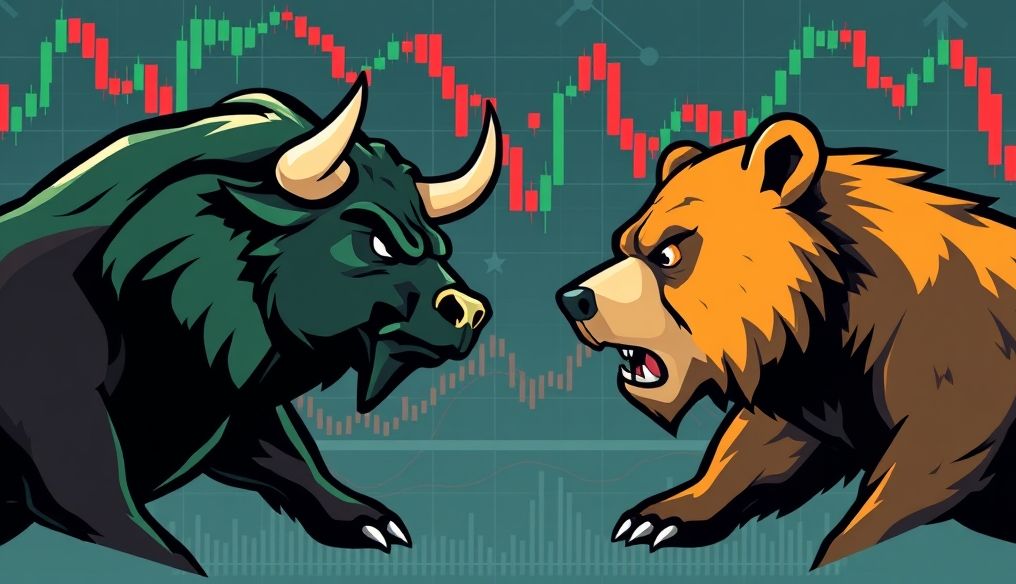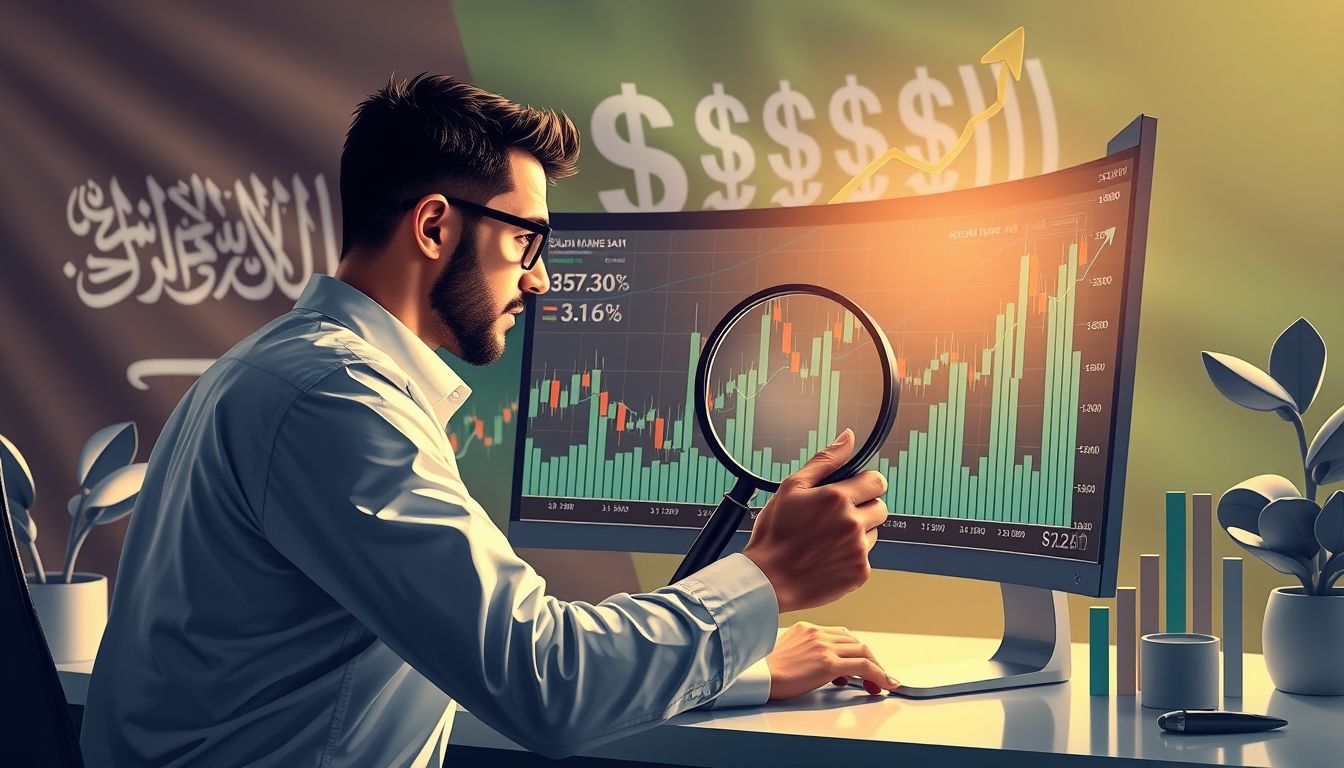Introduction: Understanding the Dynamics of Financial Markets
Financial markets are characterized by constant volatility, with periods of rising prices (bull markets) alternating with periods of falling prices (bear markets). The ability to adapt to these changes and use appropriate trading strategies for each situation is key to success for investors and traders.
Chapter 1: Bull Markets: Opportunities for Growth and Expansion
What is a Bull Market?
A bull market is a period of time when prices are rising continuously, driven by investor optimism and increased demand. This period is often accompanied by strong economic growth and positive news.
Trading Strategies in Bull Markets
- Buy and Hold: A long-term strategy based on buying assets and holding them for a long period, expecting prices to continue rising.
- Trend Following: Identifying the upward trend and investing in assets that are moving in the same direction. Moving averages and other indicators can be used to identify the trend.
- Investing in Blue-Chip Stocks: Focusing on large, stable companies that are expected to benefit from economic growth.
- Adding to Positions: Adding to existing positions when prices rise, while carefully managing risk.
Chapter 2: Bear Markets: Challenges and Solutions
What is a Bear Market?
A bear market is a period of time when prices are falling continuously, driven by investor pessimism and increased supply. This period is often accompanied by economic slowdown and negative news.
Trading Strategies in Bear Markets
- Short Selling: Borrowing shares and selling them, hoping to buy them back at a lower price in the future and profit from the difference.
- Hedging: Using financial instruments such as options and futures to reduce risk and protect the portfolio from losses.
- Investing in Safe-Haven Assets: Shifting investments to assets that are considered safer in times of uncertainty, such as government bonds and gold.
- Selling and Cutting Losses: Selling losing assets to minimize further losses and re-evaluate the investment strategy.
Chapter 3: Risk Management in Volatile Markets
Risk management is an essential element of any successful trading strategy, especially in volatile markets. Risk management includes identifying potential risks, assessing them, and taking the necessary actions to mitigate them.
Risk Management Tools
- Stop-Loss Orders: Setting a specific price at which the asset is automatically sold to limit losses.
- Portfolio Diversification: Distributing investments across a variety of assets to reduce overall risk.
- Position Sizing: Determining the size of the position based on risk tolerance and available capital.
- Leverage: Using leverage with caution, as it can increase both profits and losses.
Chapter 4: Technical and Fundamental Analysis: Decision-Making Tools
Technical and fundamental analysis are two main tools used by traders and investors to make investment decisions. Technical analysis focuses on studying charts and price patterns, while fundamental analysis focuses on evaluating financial and economic data.
Technical Analysis
- Charts: Studying price patterns and trading volume to identify potential trends.
- Technical Indicators: Using indicators such as moving averages and the Relative Strength Index (RSI) to confirm trends and identify entry and exit points.
- Support and Resistance Levels: Identifying price levels at which the price is expected to find support or resistance.
Fundamental Analysis
- Financial Statements: Analyzing the financial statements of companies, such as revenues, profits, and debts, to assess their value.
- Economic Data: Monitoring economic data, such as growth rates, inflation, and unemployment, to assess the overall economic situation.
- News and Events: Monitoring news and events that may affect financial markets.
Chapter 5: Trading Psychology: Overcoming Emotions
Emotions can play a significant role in trading decisions, often leading to costly mistakes. It is important to understand the impact of emotions on trading and develop strategies to overcome them.
Impact of Emotions on Trading
- Fear and Greed: Fear of losing money and greed for more profits can lead to irrational decisions.
- Regret: Regret over missed opportunities or losses can affect future decisions.
- Overconfidence: Overconfidence in abilities can lead to excessive risk-taking.
Strategies to Overcome Emotions
- Developing a Trading Plan: Developing a pre-defined trading plan and sticking to it, regardless of emotions.
- Risk Management: Using risk management tools to limit potential losses.
- Trading Cautiously: Trading cautiously and avoiding making hasty decisions.
- Learning from Mistakes: Learning from mistakes and adjusting the strategy based on experience.
Chapter 6: Day Trading vs. Long-Term Trading
Day trading and long-term trading are two completely different strategies, each with its advantages and disadvantages. Day trading involves buying and selling assets in the same day, while long-term trading involves holding assets for a long period.
Day Trading
- Advantages: Potential for quick profits, no risk of holding assets overnight.
- Disadvantages: Requires a lot of time and effort, high risk, requires advanced skills and experience.
Long-Term Trading
- Advantages: Requires less time and effort, lower risk, can generate significant returns in the long run.
- Disadvantages: Requires patience, may be affected by short-term market fluctuations.
Chapter 7: Using Options and Futures in Trading
Options and futures are complex financial instruments that can be used for hedging and speculation. Options give the right, but not the obligation, to buy or sell an asset at a specified price on a specified date. Futures obligate both parties to buy or sell an asset at a specified price on a specified date.
Options
- Call Options: Grant the right to buy the asset.
- Put Options: Grant the right to sell the asset.
Futures
- Hedging: Using futures to protect investments from price fluctuations.
- Speculation: Using futures to speculate on price trends.
Chapter 8: Trading in Emerging Markets
Emerging markets offer significant investment opportunities, but they also carry higher risks. It is important to understand the characteristics of emerging markets and develop appropriate trading strategies.
Characteristics of Emerging Markets
- Rapid Economic Growth: Emerging markets are characterized by faster economic growth than developed markets.
- High Volatility: Emerging markets are characterized by higher volatility than developed markets.
- Political and Economic Risks: Emerging markets carry higher political and economic risks than developed markets.
Trading Strategies in Emerging Markets
- Research and Analysis: Conducting thorough research and analysis before investing in emerging markets.
- Diversification: Diversifying investments across a variety of emerging markets.
- Risk Management: Using risk management tools to limit potential losses.
Chapter 9: Technology and its Role in Modern Trading
Technology plays an increasingly important role in modern trading. Online trading platforms, real-time data, and advanced analytical tools all help traders make better and faster decisions.
Importance of Technology in Trading
- Access to Markets: Online trading platforms provide easy access to global financial markets.
- Real-Time Data: Real-time data provides accurate information on prices and volumes.
- Analytical Tools: Advanced analytical tools provide the ability to analyze data and identify trends.
- Automated Trading: Automated trading systems allow trades to be executed automatically based on pre-defined criteria.
Chapter 10: Conclusion: Building a Successful Trading Strategy
Building a successful trading strategy requires a deep understanding of financial markets, risk management, emotional control, and the use of available analytical tools. By combining these elements, traders can increase their chances of success in both bull and bear markets.
Disclaimer: This article is for informational and educational purposes only and does not constitute financial advice. Investors should consult a qualified financial advisor before making any investment decisions.



